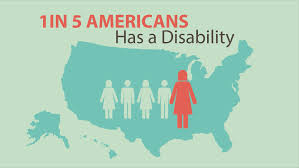As of 2015 there were 40 million Americans with disabilities. That’s a lot of people who should be able to use your website – or the technology you offer – but may not be able to do so. It’s helpful to them if your site is easily accessible, but if you want the federal government or even its employees to have access you may need to make a few tweaks.
Section 508, an amendment to the United States Workforce Rehabilitation Act of 1973, is a federal law mandating that all electronic and information technology developed, procured, maintained, or used by the federal government be accessible to people with disabilities.
What, exactly, is “accessible”? Essentially it means that whatever you offer needs to be as easy to use by those who have disabilities as it is by those who do not. When it comes to websites, the good folks at Essential Accessibility have developed a checklist to help you determine if you need to make changes. It includes things like:
- Text equivalents for every photo, image, logo or other non-text element.
- Flickering only at a frequency of more than 2 Hz or less than 55 Hz to reduce seizure risk.
- Online forms should be able to be completed using assistive technology or just the keyboard, just a mouse.
- High contrast between the information and the background color, to support limited vision.
- Limit scrolling to get to the core elements.
These are just five tests you can try for yourself. Once you believe you are in compliance, demonstrate it to the government by completing a Voluntary Product Accessibility Template (VPAT), an informational tool that describes exactly how the product or service does or does not meet Section 508 standards. The completed VPAT gets posted on the creator’s Web site to provide government officials and consumers with access to the information.
We’ve fixed websites and even software for many companies. If you need a hand, don’t hesitate to call on PS Solutions.

